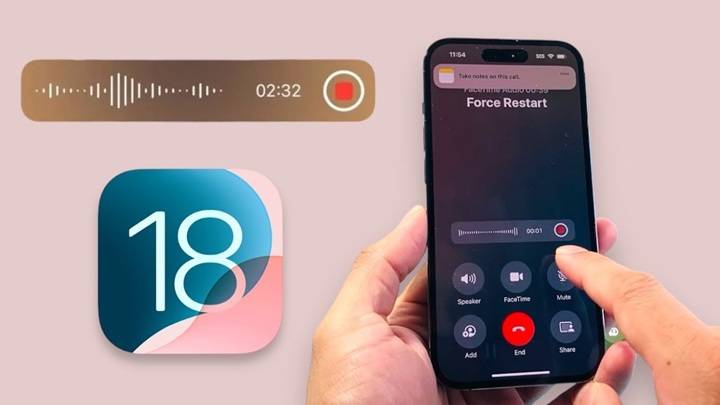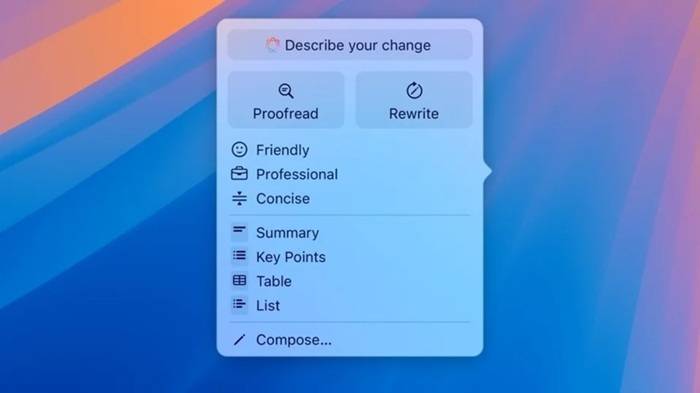
How to Record a Phone Call on iPhone: The Definitive Guide
It has been harder on an iPhone to capture a phone call than it should be. While call recording is easy on other Android devices, Apple never wanted anything to do with user privacy or obeying the law, so native call recording has never been an option in most jurisdictions. But since newer versions of iOS and some third-party software components and hacks, a call is now an easy call to record.
Whether you are trying to save a crucial conversation, conduct an interview with someone, or record oral directions or deals to refer back to, being able to legally and effectively record a telephone call can be a huge assistance.
Here, you’ll learn how to record iPhone calls in many ways, learn the legality of recording in many different countries and regions, steer clear of landmines, and learn tips for improved sound quality. You’ll be the expert on how to record any call that matters to you after reading this.
Why Record iPhone Calls?
People record calls for many good reasons:
- For work: for interview, meetings, or customer service calls
- For legal and safety reasons: to record promises, abuse, or threats
- For reference purposes: to recall oral instructions or agreements
- For emotional value: to record a call from a loved one
Recording isn’t just documentation. It’s about clarity, memory, and convenience. Instead of relying on scribbled-down facts or fuzzy recollections, you have an accurate replay of what was said.
iPhone’s Integrated Call Recording: What’s New?

With the subsequent iOS releases (iOS 18 and later), Apple has integrated in-built call recording. It is only available in a few countries and operates on stringent laws of justice.
If you make use of this in-built feature:
- The “Record” icon while on a call or FaceTime audio session
- Apple notifies all involved with an automated voice or sound notice that the call is recorded
- The recording, and transcript, are saved in the Notes app
- AI performs summary and search
Apple’s response to “two-party consent” law so that everyone who is involved on the call is notified and agrees to being recorded.
How to Use iPhone’s Integrated Recording (iOS 18+)
- Make or accept a phone or FaceTime audio call
- Tap the “Record” button on the call screen
- Apple notifies everyone who were involved in the recording automatically
- The recording begins and continues until the phone call is dropped or you manually end it
- After the call has ended, go to the Notes app where you can hear the recorded call and transcript
- You can replay, summarize, or share the note depending on what you require
If your phone lacks this option, legal restrictions might not be applicable to your country or area. In this case, you will have to opt for third-party apps or alternatives.
Third-Party iPhone Call Recording Apps
There are several apps on the App Store that have call recording capabilities, particularly for users in areas where Apple’s native recording is not supported. These apps typically work by utilizing three-way calls where your call goes through the app’s servers and is stored there.
Some of the popular app-based solutions are as follows:
Rev Call Recorder
- Is free to download
- Provides good quality of audio
- Works by making a three-way call
- Simple export and sharing features
- U.S. phone number
TapeACall
- One of the top call recording apps
- Supports conference call-type recording
- Captures incoming and outgoing calls
- Subscription model pricing
Call Recorder Lite / CallBox / Record Calls+
- Tied with some paid features but locked
- Pay-to-see full calls
- Can add cloud storage or transcription
How to Use a Third-Party Call Recorder App
- Download your preferred app on the App Store
- Sign up for your account, usually requesting your phone number
- Open the app and press to make a call or answer a call
- The app places you in a three-way call, where you are connected to a recording line
- Get access to the recording after the call is over through the app
- Listen, download, transcribe, or share accordingly
Some apps offer automated transcriptions, password protection, or integration with cloud storage.
Also Read: When Calls the Heart Season 11
Record Calls with an External Device
If apps are not working or if you need a temporary offline solution, call recording through a third-party device comes in handy. It is effective when:
- You need to bypass third-party servers
- You need a physical record
- You are in an area where app functionality has been limited
Recording Calls with Voice Memos on a different iPhone or iPad
- Begin a call on your main iPhone
- Put the call on speakerphone
- Open the Voice Memos app on a spare iPhone or iPad
- Tap Record and place it next to your main phone’s speaker
- Tap Stop when finished and save the recording
Recording with a Dedicated Recorder
Handheld audio recorders from a professional (e.g., Sony, Zoom, or iZyrec) can be used to record with, attached to your phone with a Lightning-to-3.5mm adapter or microphone.
Steps:
- Attach your recorder to your iPhone (using the right adapter if needed)
- Place your phone on speakerphone or audio path to recorder
- Press Record on the device before placing the call
- Save and record the recording when finished
It is of high-quality audio-out and is utilized by professionals and journalists.
Legal Consequences: Is Recording Calls Legal?
Phonographic statutes vary geographically. The primary difference is between “one-party consent” and “all-party consent.”
One-Party Consent
In most locations (most U.S. states), it is legal if one party to the call consents to recording. That is, if you are a party to the call, you can record the call without having to inform the other party.
All-Party Consent
In the rest of the world, everyone on the call has to consent to being recorded. That is true in California, Florida, and several other states in the United States, as well as the majority of Europe and Asia.
Check your local law first before recording a call. To record a person without his or her permission in a two-party state or nation is illegal and will have consequences.
How to Stay Legal and Ethical
- Notify the other party you are recording, though not required by law
- Use apps or services that automatically provide a consent notice
- Do not record sensitive calls (medical, financial, legal) unless strictly necessary and authorized
- Delete recordings you do not require
- In the case of doubt, ask for permission, oral or written
Best Use Circumstances for Recording Telephone Calls

The following are some circumstances in which call recording is especially useful:
- Work: Client meetings, interviews, project instructions
- Legal: Oral agreements, conflict resolution, proof
- Education: Practice with language, coaching calls, lectures
- Personal: Flailing calls from loved ones, holding onto good moments
A good way to record will ensure that you do not lose any key detail or moment.
How to Improve Recording Quality
- Always use speakerphone when recording outside
- Record in a quiet area with little external noise
- Place your device or microphone beside the speaker on the phone
- Wear headsets if necessary to mute voices
- Test call first to make sure all records well
- Save recordings to a secure folder and label them with descriptive names
Avoidable Common Errors
- Assuming that it is always legal to record
- Not verifying that the app successfully saved the file
- Not warning the other party
- Inadequate mic placement, leading to mumbling or lost audio
- Over-reliance on transcription without verifying the recording
- Loss of recordings due to the absence of backup
How to Record and Archive Recordings
Once your call has been recorded, it is necessary to organize and protect files. Some simple storage tips include the following:
- Keep recordings in date or contact name folders
- Save internal iPhone recordings in Notes or Voice Memos
- Sync records to iCloud, Google Drive, or Dropbox for back-up
- Keep sensitive recordings encrypted or password protected
- Delete old or redundant recordings occasionally to make space
How to Record Calls on iPhone Made Easy
It’s no longer a technical puzzle to make a call recording on your iPhone. With newer iOS updates having a native feature and some third-party apps that are trusted, you have some solid and secure ways of recording talks. For personal, business, or legal purposes, it’s worth knowing what is available out there, and how to remain compliant with local regulations.
For optimal use, use a means that suits your model of iPhone, location, and jurisdiction. Establish clarity regarding consent, good audio quality, and safe file handling. Done successfully, you can record significant conversations and empower your iPhone and make it more productive.



